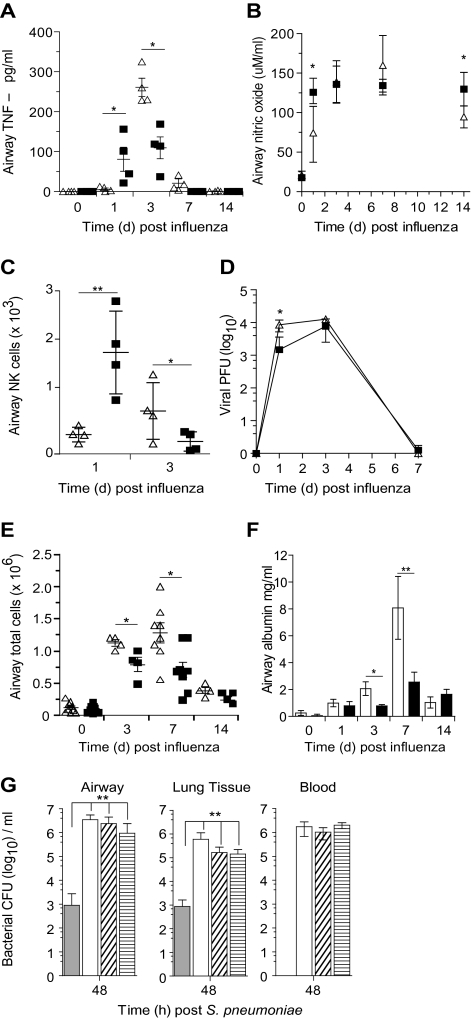Figure 3.
Antiviral immunity is enhanced in cd200r−/− mice. Airway levels of tumor necrosis factor (TNF)–α (A) and nitric oxide (B) at homeostasis (naive) and 1, 3, 7, and 14 days after infection with A/HK/X31 (H3N2) influenza virus in wild-type (triangles) and cd200r−/− (squares) mice. Natural killer (NK) cell number (C) and lung tissue viral titer (D) in wild-type (triangles) and cd200r−/− mice (squares) at 1, 3, and 7 days following A/HK/X31 (H3N2) influenza infection. Total airway cellularity (E) and albumin (F) following infection with A/HK/X31 (H3N2) influenza virus in wild-type (triangles, open bars) and cd200r−/− mice (squares, closed bars). G, Viable bacterial colony-forming units (CFU) recovered from the airway, lung tissue, and peripheral blood of naive wild-type mice (closed bar) or those at day 7 after infection with 1.25 × 105 (open bar), 3.13 × 104 (diagonal lines), or 2.08 × 104 (horizontal lines) plaque-forming units (PFU) of influenza virus at 48 hours following 104 CFU Streptococcus pneumoniae. Cytokine data were analyzed using an unpaired 2-tailed Student t-test, assuming unequal variance. All other data were tested using a 2-tailed Mann–Whitney t test with 95% confidence intervals. Bonferroni correction was used for multiple comparisons. Data are representative of 4 independent experiments (n = 6–8 mice per group). * P < .05, ** P < .01, *** P < .001 versus corresponding group.

